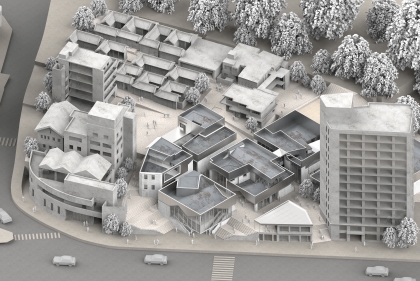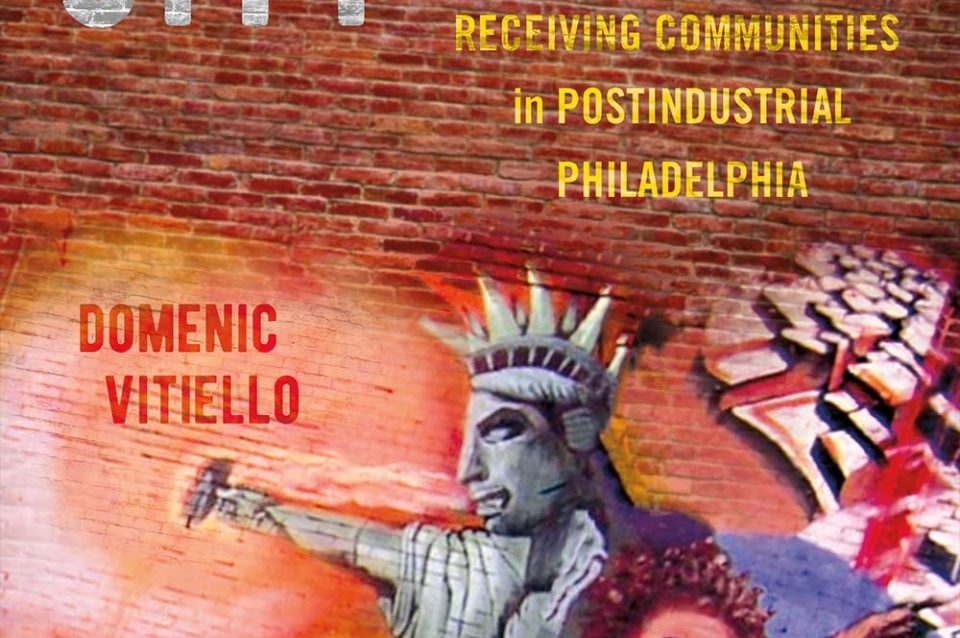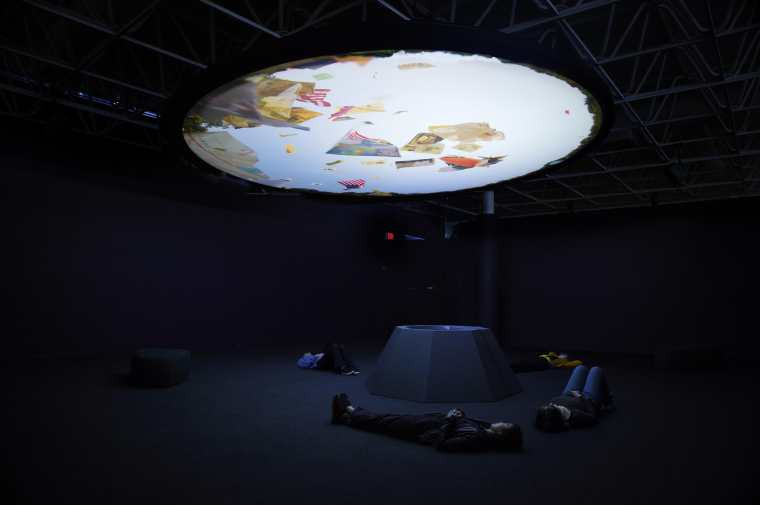October 7, 2022
Stuart Weitzman School of Design
102 Meyerson Hall
210 South 34th Street
Philadelphia, PA 19104
Get the latest Weitzman news in your Inbox
Media Contact
Michael Grant
mrgrant@design.upenn.edu
215.898.2539
Philadelphia has been an important center of sanctuary and reflects the growing diversity of American cities in recent decades. In his new book, The Sanctuary City: Immigrant, Refugee, and Receiving Communities in Postindustrial Philadelphia (Cornell University Press, 2022), Associate Professor of City and Regional Planning Domenic Vitiello argues that sanctuary means much more than the limited protections offered by city governments or churches sheltering immigrants from deportation. In an excerpt from the book’s introduction, Vitiello suggests what is at stake for the immigrants and refugees who have come to Philadelphia in recent years.
A book talk by Vitiello is planned for Thursday, October 13, 12:00pm.
Migration, Sanctuary, and Cities
The multifaceted notion of sanctuary, this book contends, offers an important way to understand the relationships between migration, migrants, and cities. It affords a broad perspective across the arc of people’s migration, settlement, and continued relationships with their homelands as well as receiving communities’ relationships with newcomers over time. Considering sanctuary helps us relate the politics and geopolitics of immigration to people’s everyday experiences. It offers a lens through which to trace the disputed, evolving positions of different newcomer groups in US society and in the city, its neighborhoods and communities.
The concept of sanctuary demands that we consider not only municipal policies and politics but also the relationships between the local, national, and transnational contexts of different migrations. Why are particular groups here? What sorts of protection do our governments and communities afford them, and why? Protection from what? Answering these questions can help us make sense of the United States’ and its cities’ relationships with different nations and peoples of the world.
Attention to the contested nature of sanctuary, including refugees’ and immigrants’ critiques of the limits and ironies of their protection, underscores global and local struggles over power and human rights. Scholars of critical refugee studies have advocated a departure from predominant views of refugees as helpless victims, objects of rescue, and crises or problems in themselves. Rather, refugees’ experiences make visible the ongoing processes of imperialism, conflict, state violence, displacement, and the racialized and gendered ways in which people are made subjects of the nations and cities that receive them.28 In a broader sense, this applies to immigrants at large.
Parsing the variety of humanitarian assistance entailed in sanctuary illuminates the everyday experiences of immigrant, refugee, and receiving communities in housing, work, legal aid, safety, friendship, and other key dimensions of communities’ well-being. What sorts of problems do different groups face? What help are they offered and by whom? How do the answers to these questions shape people’s experiences of settlement, relations between newcomer and receiving communities, and people’s ability to transcend social, economic, and other challenges over time? More simply, in the words of urban planner Leonie Sandercock, “How can we … strangers live together without doing each other too much violence?”(1) Exploring these questions forces us to reflect on what we owe one another as “human beings, as neighbors and inhabitants of a deeply interconnected world.
As an analytical framework, sanctuary elevates the interests and agency of both newcomers and old-timers more explicitly than inquiries that mainly ask, “What have immigrants done for cities?” This latter line of questioning commonly refers to economic outcomes, population growth, and other statistics that matter but that fail to capture the most immediate, intense, and meaningful impacts of immigrant and refugee settlement for most city residents, new and old. Exploring sanctuary illuminates much about urban revitalization and the economic costs and benefits of immigration for the United States, for cities, and for migrant and receiving communities. But it also reveals something more human and more complex. Examining people’s everyday experiences, their problems and how they address them, removes immigration and its impacts from the realm of the abstract. Sanctuary as a set of practices, a term activists use as both a noun and a verb, invites us to understand people, especially newcomers, as the central actors in shaping the relationships between migration and cities, partly through the civil society institutions they form and run.
Sanctuary has existed in tension with other ways in which Americans understand the relationships between immigration (or immigrants) and cities, whether popular concerns about the “invasion” of “aliens,” costs and benefits, or more affirmative ideas about revitalization.(2) The Philadelphia sanctuary city campaign in 1986 addressed people who feared sanctuary cities would “open up our country to hundreds of millions of refugees if we set this precedent,” asserting in response that “it’s not clear that we would be harmed” by the arrival of “more illegal immigrants.” They cited “economic studies in California” showing that “these people pay considerably more into the government in taxes than they receive in social services, government benefits, public school expenditures.… In other words, they subsidize our governments,” and as low-wage workers, they “are benefitting the private sector as well.”(3) More recently, sanctuary activists have celebrated immigrants’ contributions to urban revitalization while citing similar studies that demonstrate the positive impacts of immigration on America’s economy and public safety.(4)
However, such arguments have made many sanctuary activists uncomfortable given their reduction of immigrants and their merits to economic units and their apparent celebration of inequality and low-wage, precarious work. Still, this narrative of economic contributions as a justification for immigrants’ right to stay played well with politicians and other allies in the 1980s. It was even more powerful in the 2000s and 2010s, when people witnessed immigrant-led revitalization across the country. The commitment of some local politicians to sanctuary city policies stemmed narrowly from a desire to perpetuate that growth. Therefore, while they continued to employ the narratives of revitalization and benefits (more than costs), activists in the late twentieth and early twenty-first centuries also articulated more humanistic and more sacred justifications for sanctuary and sanctuary cities. They stressed religious traditions, moral imperatives, and cities’ historical commitments to offering protection and assistance to vulnerable people.
Scholars have less often conceived of cities as sanctuaries and have commonly viewed sanctuary policies and movements with skepticism. Some argue that the relationships between hosts and guests always limit the possibility for people to accept one another unconditionally. The host country’s laws of immigration, asylum, and refugee protection are only the most obvious limits on the rights and acceptance of guests. They produce an ever-present imbalance of power among people that neither city governments nor civil society can overcome.(5)
Social scientists have cast sanctuary city policies as a form of urban citizenship and governance that allows cities to delimit the rights of migrants. Their guarantee of access to services enables cities to manage undocumented populations and their impacts on the city, including its health and safety and its budget, in part by limiting who gets specific protections and support—once again distinguishing between deserving and undeserving immigrants.(6) Some critics charge that sanctuary policies do little more than sustain an unjust status quo in which migrants who lack legal status continue to do precarious work that enriches the city and its more privileged classes.(7)
Activists and scholars have also lamented the limits of social movements and civil society to offer migrants fuller protections, which might enable people to transcend their social, economic, and legal insecurity. Congregations offering sanctuary help shield a small number of immigrants from detention but do little to alter communities’ fundamental vulnerabilities.(8) Charity and community support, according to some critics, should never be expected to provide an enduring system to welcome and protect vulnerable newcomers.(9) Yet to varying degrees in different places and communities, such systems do exist in US cities: witness the long-term work “and larger impacts of sanctuary movements and a broader set of civil society institutions.
Historically, sanctuary city protections have been episodic, but civil society has a long record of assistance to migrants in the United States, with substantial continuities. In the nineteenth century, middle-class reformers established missions, settlement houses, and other organizations to aid newcomers in cities across the nation. Immigrants themselves started mutual aid associations and other organizations. Some of these institutions survive today as social service providers, community centers, and refugee resettlement agencies.
Civil society gives the humanitarian assistance aspects of sanctuary a bigger history than just sanctuary city protections or even sanctuary movements. The story of the Sanctuary Movement and some of the institutions it produced, as recounted in this chapter and the next one, indicates this. Civil society also exposes and helps to make up for the limits of protections and assistance from the state, including the resettlement system, which is the most concerted support the United States offers to vulnerable people from abroad. To be sure, some parts of civil society, such as white supremacist movements and militias, promote violence and oppression. Moreover, civil society has never had “the resources to fully compensate for the failures of the state. Its powers and success are limited, and tensions between different parts of civil society persist. Nonetheless, from human rights organizations and health clinics to employment and legal services and from soccer leagues to transnational hometown associations, the spaces and supports that civil society offers people matter deeply to most immigrant and receiving communities. In the words of political scientist Els de Graauw, civil society is key to “making immigrant rights real” by helping people seek, claim, and exercise rights, needs, and privileges.(10)
This book explores sanctuary in large part through the work of civil society, tracing the ways in which different communities have organized and addressed the challenges they faced. Injustice and violence fill many pages—both physical violence and structural violence, meaning political and economic structures or systems that produce oppression. Yet it presents a more optimistic view of civil society, and of sanctuary, than some of the criticism noted previously, even if it shares many of the same critiques of sanctuary city politics and policies. Local and transnational community revitalization are important parts of this story. As suggested in this chapter, however, revitalization does not fully describe “the deeper, more challenging problems and processes of building and repairing communities in US cities and the regions around the world to which migration has increasingly tied us.
As indicated by the people who testified at the Philadelphia City Council hearing in 2014, sanctuary has often meant different things for different immigrant, refugee, and receiving communities. The city is a sanctuary from something different for each community—sometimes for each individual or family—and communities’ and individuals’ experiences of sanctuary in the city vary widely. The United States’ relationships with nations and peoples around the world condition the position of all immigrants in the country. The state divides newcomers into categories that grant distinct rights and privileges to different people.
The further protections and support that newcomer and receiving communities seek and build illuminate their diverse processes of community formation and development over time. Their civil society organizations have evolved in ways that are sometimes similar but often different, befitting communities’ specific legal, work, and housing problems; religious institutions; cultural practices; and transnational ties. They have also experienced diverse trajectories of wealth and mobility, “community relations, and places in local, national, and international debates about migration. Their experiences, geographies, visions, and critiques of sanctuary (and its closest synonym, refuge) thus help us grasp some of the tremendous diversity of America’s immigrants and refugees and of our cities and receiving communities.
Ultimately, all, or almost all, the groups featured in this book have become part of the fabric of the city and region. They have all built protections and support systems, with varying levels of help, resistance, and collaboration with receiving communities. Their experiences in the late twentieth and early twenty-first centuries are particular to their time, though they echo broader patterns in the history of migration, cities, and sanctuary.
1) Leonie Sandercock, Cosmopolis II: Mongrel Cities of the 21st Century (New York: Continuum, 2003), 127; see also Michael Jones-Correa, “All Immigration Is Local: Receiving Communities and Their Role in Immigrant Integration,” Center for American Progress, Washington, DC, September 20, 2011, https://www.americanprogress.org/issues/immigration/reports/2011/09/20/10342/all-immigration-is-local/.
2) “Domenic Vitiello, “Sanctuary and the City,” Metropole, March 6, 2019, https://themetropole.blog/2019/03/06/sanctuary-and-the-city.
3) “Why Philadelphia Should Become a Sanctuary City.” Central America Network files, Swarthmore Peace Collection.
4) Robert J. Sampson, “Immigration and the New Social Transformation of the American City,” in Immigration and Metropolitan Revitalization in the United States, ed. Domenic Vitiello and Thomas J. Sugrue, 11–24 (Philadelphia: University of Pennsylvania Press, 2017).
5) Jacques Derrida, The Politics of Friendship (1994; reprint, New York: Verso, 2006); Derrida, On Cosmopolitanism and Forgiveness (New York, Routledge, 2001); Jacques Derrida and Anne Dufourmantelle, Of Hospitality (Redwood City, CA: Stanford University Press, 2000); see also Ann Deslandes, “Sanctuary Cities Are as Old as the Bible,” JStor Daily, March 22, 2017, https://daily.jstor.org/sanctuary-cities-as-old-as-bible/.
6) Peter Mancina, “The Birth of a Sanctuary City: A History of Governmental Sanctuary in San Francisco,” in Sanctuary Practices in International Perspectives: Migration, Citizenship and Social Movements, 205–218, ed. R. K. Lippert and S. Rehaag (Abingdon, UK: Routledge, 2012), 205–218; Helen B. Marrow, “Deserving to a Point: Unauthorized Immigrants in San Francisco’s Universal Access Healthcare Model,” Social Science & Medicine 74 (2012): 846–854.
7) Jonathan Darling, “Forced Migration and the City: Irregularity, Informality, and the Politics of Presence,” Progress in Human Geography 41, no. 2 (2017): 178–198 (quote on 184); see also Tanya Basok, “Counter-Hegemonic Human Rights Discourses and Migrant Rights Activism in the US and Canada,” International Journal of Comparative Sociology 50, no. 2 (2009), 183–205; Monica Varsanyi, “Interrogating ‘Urban Citizenship’ vis-à-vis Undocumented Migration,” Citizenship Studies 10, no. 2 (2006): 229–249; Amy Foerster, “Solidarity or Sanctuary? A Global Strategy for Migrant Rights,” Humanity & Society 43, no. 1 (2019): 19–42; Vicki Squire, “From Community Cohesion to Mobile Solidarities: The City of Sanctuary Network and the Strangers into Citizens Campaign,” Political Studies 59, no. 2 (2011): 290–307.
8) Patricia Ehrkamp and Caroline Nagel, “ ‘Under the Radar’: Undocumented Immigrants, Christian Faith Communities, and the Precarious Spaces of Welcome in the U.S. South,” Annals of the Association of American Geographers 104 (2014): 319–328 (quote on 321; also Ehrkamp and Nagel, “Immigration, Places of Worship and the Politics of Citizenship in the U.S. South,” Transactions of the Institute of British Geographers 37 (2012): 624–638; Jennifer Bagelman, “Sanctuary: A Politics of Ease?” Alternatives: Global, Local, Political 38, no. 1 (February 2013): 49–62.
9) Darling, “Forced Migration and the City,” 185; see also Jonathan Darling, “Giving Space: Care, Generosity, and Belonging in a UK Asylum Drop-In Centre,” Geoforum 42 (2011),:408–417; Karen Wren, “Supporting Asylum Seekers and Refugees in Glasgow: The Role of Multi-Agency Networks,” Journal of Refugee Studies 20, no. 3 (2007): 391–413.
10) Els de Graauw, Making Immigrant Rights Real: Nonprofits and the Politics of Integration in San Francisco (Ithaca, NY: Cornell University Press, 2016).


 Expand Image
Expand Image



